Z-Man Evergreen Chatterbait Jack Hammer Review
Z-Man Evergreen Chatterbait Jack Hammer Review
If you’ve read many of my other reviews, you know by now that I am pretty budget-conscious. It’s very rare that I will spend $20 for a single bait. That fact alone makes it even more unusual that I would be writing this Z-Man Evergreen Chatterbait Jack Hammer Review. But I am, so let’s get started!
First, let me explain how I happened upon ownership of this rather expensive bait.
Several months ago I received an email from a Tackle test reader. He was curious as to whether or not I would be willing to review a product that someone was willing to send me for free. I replied and explained that I typically don’t except free products from companies. The only exception would be if they’re willing to give me product in exchange for a 100% honest review. I will not be biased whatsoever, even with free products.
He responded to tell me that he wasn’t a tackle manufacturer. He was just an avid angler who wanted my opinion about some products that he would buy and have shipped to me. One of those products ended up being the Z-Man Evergreen Chatterbait Jack Hammer. Another one of the products he sent me was the Sunline Super Fluorocarbon Fishing Line, which I reviewed here.
I was thankful that he would even consider sending me free tackle. I was even more excited about testing these products and writing the reviews for them.
So, that’s the short story of how I ended up writing this Z-Man Evergreen Chatterbait Jack Hammer Review.
Let’s Talk About the Bait Itself
First, let me say that seeing the bait for the first time wasn’t particularly eventful. By that I mean that it wasn’t exciting. It didn’t conjure up visions of lunker bass or a state record coming over the side of my boat. It was just a bladed jig, staring up at me from the shiny plastic packaging.
Then I started looking at it more closely, wanting to know what might make this bait unique compared to the original Z-Man Chatterbait. And I wanted to know why this bait would cost close to $20, when their original baits were selling for $6 or less.
Initial Impressions

Now, keep in mind that first impressions aren’t always accurate. For example, hardware can look good, but it’s only real-world testing and use that will prove one way or the other if it’s really good nor not.
Paint can look great, but how will it hold up over time, after catching fish and banging off a bunch of rocks.
These are the things that I need to keep in mind as I test a new bait. How does it really hold up in the real world?
Let’s Take it Fishing
My first trip out in April (2020), I made sure I tied this bait on so I could put it to the test early in the season. Additionally, the lake that I fish near my home in the very early spring is a great place for bladed jigs and spinnerbaits, since it’s very shallow and has scattered weeds everywhere. I’ve caught bass up to 4 lbs. in this lake on my homemade bladed jigs in the past.
Not long into that first trip, I had my first bite on the Jackhammer. In fact, it was my first bite of the season if I remember correctly.
I set the hook and brought a bass of about 1 1/2 lbs. aboard the boat. Not a bad way to start the new fishing season 🙂
Over the course of the rest of the day, I threw this bait a lot, alternating between it and one of my own spinnerbaits that I’d made. I ended up catching a few more fish on it, although nothing big would bite it. To be fair, though, we didn’t catch anything big on any baits that day. The big girls just didn’t want to play for whatever reason. But at least I started to get a feel for the bait itself.
The First Day
So, after fishing with this bait for the first time, what did I think?
Well, one of the things that I noticed is that the bait did start vibrating immediately as I started the retrieve. No need to snap it forward to get it started. That was a big plus.
For comparison sake, though, the bladed jigs that I make myself also do this 🙂
Another thing that I also noticed was that the vibration was tight. It wasn’t a wide wobble or heavy vibration like what I get from my own bladed jigs. That doesn’t make it bad; just different. It had a tighter wiggle. Some of this may be attributed to the trailer I was using, since it had no real swim tail on it. But most of it was due to the style and shape of the blade.
In light of it having a tighter wiggle and less-than-thumping vibration, I surmise that it won’t work as well in muddy water as a bladed jig with a more definitive thump. I haven’t proven that, but the science behind underwater vibration and how bass find their prey would tend to lean toward that conclusion also.
And Then There Was Summer

Oddly, I never did catch any giant bass on it. I did catch one decent bass, but nothing that would make me rave about it.
Was it the bait’s fault? Not at all. It just kind of played out that way due to many other factors. I actually didn’t catch many huge bass on my own bladed jigs last year, either.
So, What About It?
What about this bait that costs $20?
Well, let me start to run down what I liked and what I didn’t like about it after using it for a season.
First, it definitely catches fish. That’s a given. It worked well. It also has its own unique aspects, such as the blade attachment mechanism.
The finish held up well. It is definitely a quality finish, just as my initial impressions stated.
The entire bait held up well, in fact. The skirt stayed intact. The blade stayed attached. The hook was strong, stayed sharp and showed no signs of corrosion over the course of an entire season of use.
A Couple Other Things to Mention
A lot of people tend to compare this bait to the original Chatterbait and wonder why it costs so much more. And while the two baits are similar, they are also different.
Here’s why I say that.
The original Chatterbait is still the only bladed jig in the market that uses the unique way of attaching the blade directly to the jig head. The Jackhammer follows in those footsteps, using a similar attachment type.
The head of the Jackhammer is unique in its design, with a low center of gravity that forces the bait upright as soon as hits the water. This obviously helps immensely with starting the bait vibrating right away when you start the retrieve.
The position of the jig’s eye causes the blade to hit the head, creating a ticking sound that the fish definitely hear. This will definitely lead to some chipping of the paint on the front of the head. That chipping, though, isn’t terrible or very noticeable. Nor is it in a big area. It is isolated to the very front corners.
The hook is a Gamakatsu heavy gauge hook that should stand up to anything you dish out. And as I mentioned above, the hook doesn’t rust. It’s definitely a premium hook.
Other Features Worth Discussing
This bait is equipped with a double wire bait keeper, so it keeps the soft plastic trailer in place. On my part, though, I always add a drop of Super Glue when sliding any soft plastic trailer onto any of my baits. This guarantees that the only way the trailer is coming off is if I pull it off myself or if it just plain gets torn to pieces from catching too many fish on it.
The blade on this bait is thin. It is stainless steel, so it’s good quality. It won’t rust or corrode. The lack of thickness, though, does bother me a bit. The blade on mine did get straightened out a bit, so it doesn’t have the exact bend that it had when it came out of the package. Of course, I can fix that. But why should I have to? This is, after all, a $20 bait.
I know that there was a specific reason for using a blade this thin, which I will talk about in a minute. But the fact that it will bend as easily as it did for me is a bit frustrating.
A Hop, Skip and a Jump
Wait. What? A hop, skip and a jump?
Yep! This bait skips really, really well!
Part of why this bait was designed the way it was, with the low center of gravity, and the thin, lightweight blade, was to allow it to skip easily. And skip it does!
If you’re adept at skipping baits, you will absolutely love this bait for skipping into or around cover. Skipping the Jackhammer under a dock or between pontoons is a piece of cake. Just don’t hit the boat!
So, even though I don’t like the “thinness” of that blade, it does serve a purpose.
The Rumor Mill
I also wanted to mention briefly that there have been rumors floating around that the head on this bait is tungsten. But it is not tungsten. It’s lead, just like the original Chatterbait.
When I first heard that rumor, I figured maybe that was part of why it had the higher price tag. That’s not the case, though.
That Price Tag
Before I give you my rating, let me talk briefly about the price. When these baits first hit the market, they were selling like hotcakes for $20 everywhere.
These days the price has dropped some. And depending on where you buy them, you can get prices as low as $16.00 (Tackle Warehouse). Some places still sell them for $20 and up, so be sure to do your homework!
All in all, if you want the special features mentioned above (especially the ability to skip), in a bait made with high quality components, the price tag is worth it. But if you’re just looking for another bladed jig, buy something less costly, like the original Chatterbait.
Wrapping It Up
I have to admit when I set out to test this bait, I never thought I would actually think it was worth the price tag, let alone that I would recommend anyone buy them.
So, as I write the closing lines of this Z-Man Chatterbait Jackhammer Review, I’m torn. I still hate the price tag of this bait. It is, after all, just a bladed jig. My mind is not convinced that I should pay close to $20 for a bladed jig. Period.
But I know that there are some people who will snap these up for $16 – $18 simply because they’re a bit unique, and because they can be easily skipped under docks, etc.
So, with that in mind, I’m going to give these baits a 4.5 star rating.
You can check out the Chatterbait Jackhammer by clicking here.
I hope you’ve enjoyed this review. If you have, please be sure to share it with others!
And feel free to leave comments below.
Good fishing <><

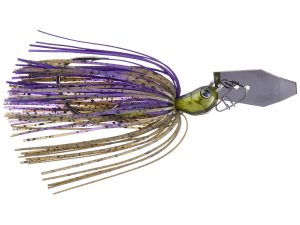

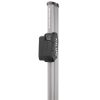

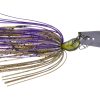
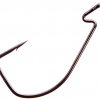
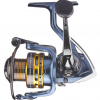
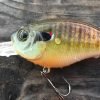
Nice honest review.
Thanks! Glad you enjoyed it 🙂